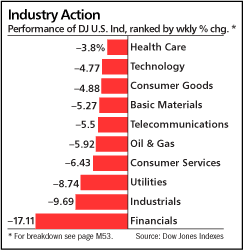
Project OVERVIEW
The 3,456-kilometre (2,148-mile) Keystone Pipeline will transport crude oil from Hardisty, Alberta to U.S. Midwest markets at Wood River and Patoka, Illinois and to Cushing, Oklahoma. The Canadian portion of the project involves the conversion of approximately 864 kilometres (537 miles) of existing Canadian Mainline pipeline facilities from natural gas to crude oil transmission service and construction of approximately 373 kilometres (232 miles) of pipeline, pump stations and terminal facilities at Hardisty, Alberta. The U.S. portion of the project includes construction of approximately 2,219 kilometres (1,379 miles) of pipeline and pump stations.
The Keystone Pipeline will have an initial nominal capacity of 435,000 barrels per day in late 2009 and will be expanded to a nominal capacity of 590,000 barrels per day in late 2010. Keystone has contracts with shippers totalling 495,000 barrels per day with an average term of 18 years.
Facts and Figures
>The total length of the Keystone Pipeline is 2,148 miles (3,456 kilometres). Approximately 1,379 miles (2,219 kilometres) of new pipeline will be constructed in the U.S.
>The Canadian portion of the project includes the construction of approximately 232 miles (373 kilometres) of new pipeline and the conversion of approximately 537 miles (864 kilometres) of existing TransCanada pipeline from natural gas to crude oil transmission.
>The new pipeline will be 30 inches (76 centimetres) in diameter to Illinois and 36 inches (91 centimetres) from the Nebraska/Kansas border to Cushing, Oklahoma.
>The pipeline will be buried with a minimum depth of cover of four feet (1.2 metres), depending on land use.
>The estimated operating pressure of new pipeline sections will be 1,440 psi (9,930 kPa). The existing pipeline proposed for conversion to crude oil transportation will be operated at its current approved allowable operating pressure of 880 psig (6,067 kPa).
Does it strike everyone odd that Canada has no problem in exploring and drilling for more oil but the United States puts a stranglehold on any new development of oil? The question is why?(Tim)
The 3,456-kilometre (2,148-mile) Keystone Pipeline will transport crude oil from Hardisty, Alberta to U.S. Midwest markets at Wood River and Patoka, Illinois and to Cushing, Oklahoma. The Canadian portion of the project involves the conversion of approximately 864 kilometres (537 miles) of existing Canadian Mainline pipeline facilities from natural gas to crude oil transmission service and construction of approximately 373 kilometres (232 miles) of pipeline, pump stations and terminal facilities at Hardisty, Alberta. The U.S. portion of the project includes construction of approximately 2,219 kilometres (1,379 miles) of pipeline and pump stations.
The Keystone Pipeline will have an initial nominal capacity of 435,000 barrels per day in late 2009 and will be expanded to a nominal capacity of 590,000 barrels per day in late 2010. Keystone has contracts with shippers totalling 495,000 barrels per day with an average term of 18 years.
Facts and Figures
>The total length of the Keystone Pipeline is 2,148 miles (3,456 kilometres). Approximately 1,379 miles (2,219 kilometres) of new pipeline will be constructed in the U.S.
>The Canadian portion of the project includes the construction of approximately 232 miles (373 kilometres) of new pipeline and the conversion of approximately 537 miles (864 kilometres) of existing TransCanada pipeline from natural gas to crude oil transmission.
>The new pipeline will be 30 inches (76 centimetres) in diameter to Illinois and 36 inches (91 centimetres) from the Nebraska/Kansas border to Cushing, Oklahoma.
>The pipeline will be buried with a minimum depth of cover of four feet (1.2 metres), depending on land use.
>The estimated operating pressure of new pipeline sections will be 1,440 psi (9,930 kPa). The existing pipeline proposed for conversion to crude oil transportation will be operated at its current approved allowable operating pressure of 880 psig (6,067 kPa).
Does it strike everyone odd that Canada has no problem in exploring and drilling for more oil but the United States puts a stranglehold on any new development of oil? The question is why?(Tim)



No comments:
Post a Comment